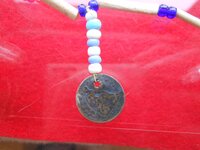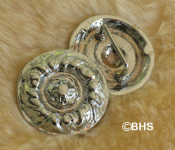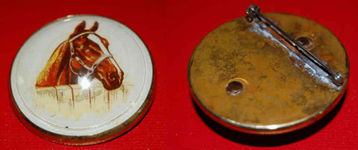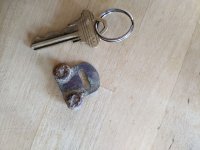Charl
Silver Member
This was found, around 1930, on the site of a 17th century Wampanoag village on the Nemasket River in Middleboro, Ma. The collector who purchased it from the finder felt that it was an English brass button made into a brass gorget by a native. Let's consider that possibility. I originally felt since many buttons have holes to begin with, how do we know a native punched those holes? An old English button from a Contact Era site seemed cool enough. Well, very recently I decided to do a google image search of "17th century English brass buttons" and realized most don't have holes at all; just a clasp on the back to string the thread though. The ones I did find with holes had 4, were not metal, and not 17th century; admittedly, not many images were returned with the search. On the side of the button with embossed floral-like designs, the holes have a raised brim. They were punched through from the back of the button, in other words. As you may notice in the back side image, the holes are ragged on their inside circumference. They are also unequal in size, one is noticeably smaller then the other hole. So I think, since it was found at a Contact Era village, with the holes punched through by hand, on a brass button that might not have holes normally, then this might in fact be just what the collector I got it from felt so certain it was, namely a small brass gorget. The clasp on the back is gone? Flattened? Both sides have a polish; the side with floral designs a high polish. 1 5/16" or 33mm in diameter.
Amazon Forum Fav 👍
Attachments
Upvote
0


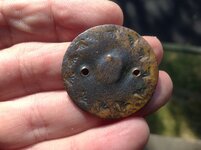
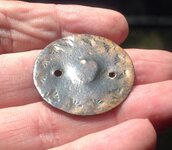
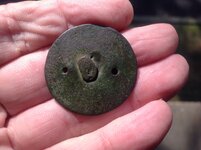
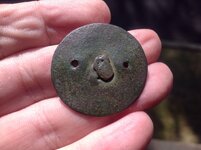
 Native Americans took great pride in trade items, while doing a dig with the state we found scissors, brass buttons, copper rings, iron bracelets, and a red glass cross in some burials. These where things they had never seen, that's how we got this country for a bunch of trade items, common everyday junk but fantastic items to them. While spending some time in South America I made more contacts with the locals with just cheap reading eye specs ,than I could with money.
Native Americans took great pride in trade items, while doing a dig with the state we found scissors, brass buttons, copper rings, iron bracelets, and a red glass cross in some burials. These where things they had never seen, that's how we got this country for a bunch of trade items, common everyday junk but fantastic items to them. While spending some time in South America I made more contacts with the locals with just cheap reading eye specs ,than I could with money.